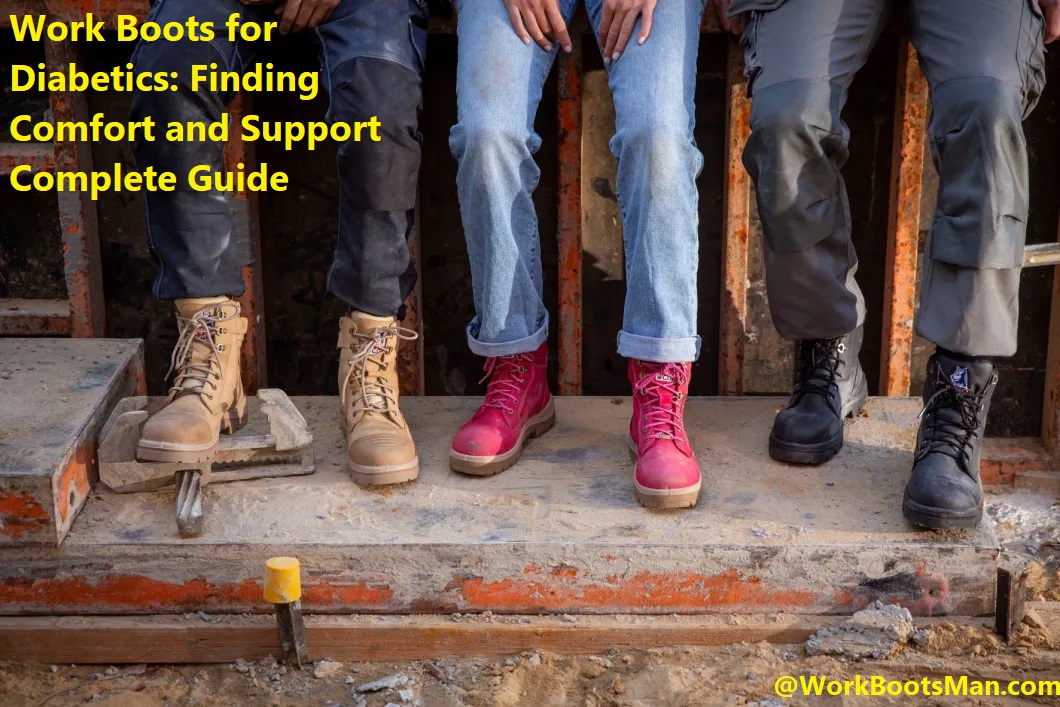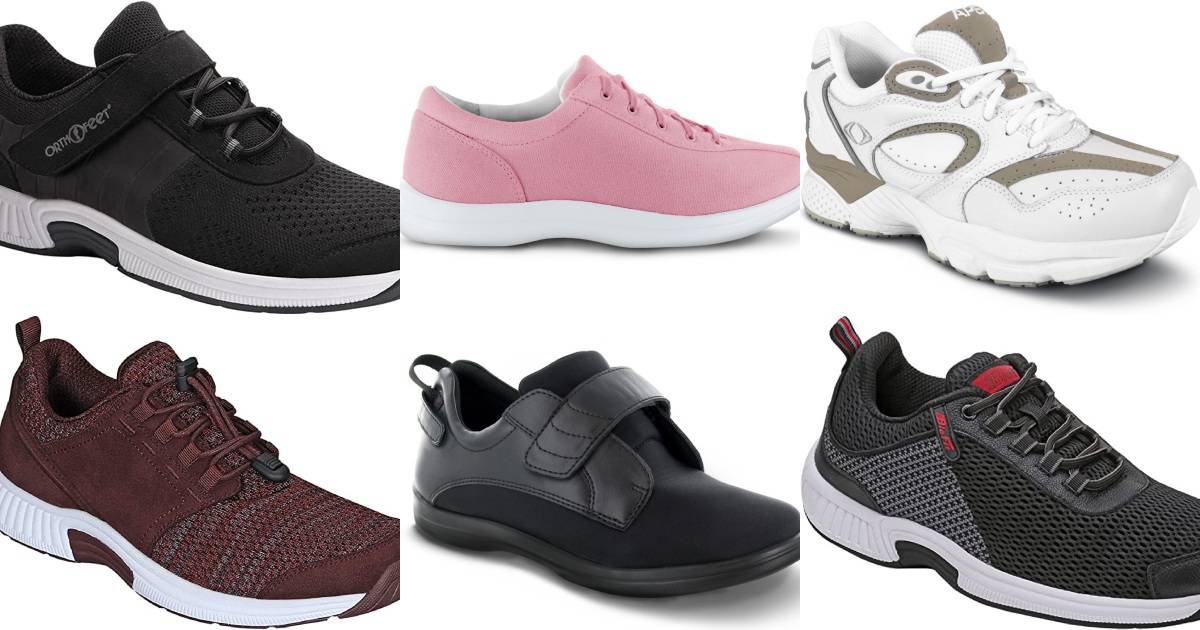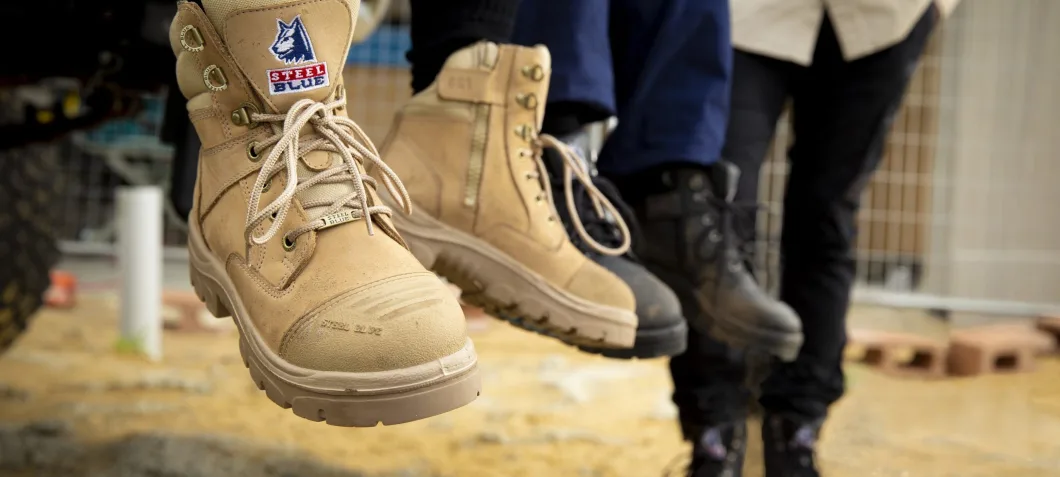Do you suffer from diabetes and are looking for the perfect work boots? You don’t have to compromise on comfort or support any longer!
This complete guide will help you find the perfect work boots for diabetics that provide the support your feet need and deserved. With so much riding on finding comfortable shoes, let’s dive right in!
Welcome to our guide on finding the perfect work boot for diabetics. Finding the right boots that fit properly and accommodate a diabetic’s particular needs can feel overwhelming, so we’ve put together all the essential information you’ll need as you navigate choosing a pair of boots.
This guide will cover everything from factors to consider when shopping for work boots, helpful features and materials that offer comfort and support, and tips on calculating the size of your feet. We will also provide an overview of different boot styles so you can make an informed selection based on your work environment. Immediately following the introduction, we will discuss in detail some of the important criteria to keep in mind while searching for a good pair of diabetic-friendly workboots.

Explanation of diabetes and its effects on feet
Diabetes is a chronic disease that affects the body’s ability to process glucose, or blood sugar. It occurs when the pancreas does not produce enough insulin, or when the body cannot properly use the insulin it produces to convert glucose into energy. Diabetes can have serious consequences for the body, including damage to nerves and vessels in extremities. Over time, this can lead to foot complications like ulcers, calluses, and even amputations.
People with diabetes tend to experience extreme foot discomfort due to compromised nerve endings in the feet and ankles due to diabetes-related nerve damage known as peripheral neuropathy. The impaired nerves cause pain and an increased sensitivity to pressure on certain areas of the feet — making it difficult for them to find shoes that offer both comfort and stability. This is why people with diabetes need work boots specifically designed for their condition: shoes that offer cushioning and support yet still provide enough mobility for safe movement throughout a workday.
Importance of proper footwear for diabetics
It is essential for those living with diabetes to wear the appropriate footwear that offers comfort, support, and protection. Poorly fitting shoes can cause unnecessary foot pain and inflammation which can have serious consequences for diabetics. If not attended to, foot complications can progress to more serious conditions such as infection, ulceration and eventually lead to lower limb loss.
To improve the quality of life and reduce risk of further complications it is advised that everyone with diabetes selects footwear suited to their foot needs. During selection of the correct shoe, individuals living with diabetes must consider the shoe’s fit and features including: width; depth; toe box shape; heel counter stiffness; sole materials; cushioning systems and construction details such as stitching or bonding that join upper and lower sections of a shoe or boot.
In addition to these features individuals should consider materials used as it could be a factor in skin sensitivity which is common in those living with diabetes. Many diabetic therapeutic type shoes are designed with seamless linings and cushioned insoles to help minimize potential abrasions or pressure, aiding in propelling all day comfort with every wear.
Also if required supportive contours must be taken into account when shopping for shoes or boots for diabetics as some manufacturers have taken extra measures by adding advanced anatomical contour designs which add additional cushioning and protect the feet from any critical pressure points through activities like work or leisure pursuits.
Overview of the guide
This complete guide provides a comprehensive overview of the best work boot options for diabetics. Whether you’re looking for the best overall, the most reliable, or simply a pair of boots that will give you the comfort and support you need, we have all the information that can help make your decision easier. We’ve broken down each boot feature in depth so that you can find your perfect fit.
We also discuss common issues associated with diabetic footwear, such as neuropathy and foot health concerns, and present useful tips and recommendations to maximize your comfort. Our guide covers all aspects of diabetic boot shopping, from selecting an appropriate style to how to get most out of your purchase.
We hope this comprehensive list helps diabetics in their search for work boots that provide excellent support, reliability and comfort in any situation.

Maintaining and Caring for Diabetic Work Boots
Having the right work boots for diabetics is only half of the battle. The other half is properly maintaining and caring for them. Proper maintenance will keep your work boots in good condition and ensure that they are providing you with the optimal levels of comfort and support that they were designed to offer. Below are some key tips on how to best maintain and care for your diabetic work boots:
- Clean Your Boots Regularly – It is important to clean your boots regularly to remove any dirt, grime, or salt residue that could eventually damage their materials over time. Most leather boots should be cleaned using a soft cloth or brush, warm water, and a mild detergent Solution.
- Condition Regularly– It’s also important that you condition your leather or synthetic material diabetic work boots regularly with a specially designed leather or synthetic material conditioner specifically formulated for long term protection against water, moisture, and sun damage.. This will keep the upper materials from drying out and cracking over time which could reduce its comfortability levels.
- Replace Laces as Needed – As laces wear down with regular use overtime it is important to replace them promptly when needed in order to provide maximum support for your feet while at work . Be sure to get replacement laces with similar specifications such as matching diameter of lace holes so they fit perfectly into each eyelet.
- Store Properly When Not In Use – Store your diabetic work boots in an area away from direct sunlight and extreme heat sources when not in use in order to avoid any unwanted deterioration over time. Leather materials tend to particularly need more upkeep than synthetic materiel based footwear options when it comes to storage since moisture can cause cracking resulting from dryness if left exposed .
Importance of proper care and maintenance
Diabetics have unique needs when it comes to footwear, and finding the right kind of work boots for those with diabetes can make a big difference in terms of comfort and support. From extra cushioning to a snug fit, proper care and maintenance of work boots will ensure a longer life span, better mobility and greater comfort.
When shopping for diabetic work boots, consider the overall design including materials used in construction, as well as any special features like extra depth or arch support that may provide additional comfort and protection. Additionally, check if the sole is water-resistant and if the boot offers any other temperature control features like vents or moisture-wicking linings.
In order to keep your feet healthy while wearing diabetic work boots, it’s important to pay attention to how they fit. Too-tight shoes can restrict circulation and cause irritation or sores over time. The adequate amount of room should be given at all points throughout the shoe (toe box, heel space), allowing for various movements of foot without feeling cramped or uncomfortable. Properly fitted footwear has been proven to help reduce chances of injuries such as blisters or skin abrasions so this step is crucial for those with diabetes.
To maintain your diabetic work boots properly throughout the lifespan of their uses there are some key steps to keep in mind from cleaning techniques such as using gentle products on leather uppers versus using softer cleaners on suede materials, always drying them away from direct heat sources like radiators and keeping an eye on stitching areas where threads may come undone over time due to wear-and-tear these are all important factors that should be taken into consideration when taking care of footwear specifically designed for diabetics wearers. By following appropriate guidelines you can ensure that both safety and longevity will be maintained allowing them be able to provide reliable care every time.
Tips for cleaning and protecting work boots
Many people with diabetes opt to wear work boots while they are on the job as they provide comfort and superior arch support. Proper care and maintenance of these boots is important in order to maintain the protective qualities of the boots. Here are some tips for keeping your workboots in good condition.
-Regularly clean your work boots: Cleaning your workboots with a soft cloth and mild detergent can help remove dirt and grime that accumulates on them, which will avoid harboring any bacteria that may aggravate skin. Afterwards, allow boots to dry naturally, if possible.
-Condition leather: Applying leather conditioner with a soft cloth regularly helps to protect against water damage and increases the longevity of your leather shoes or boots. Conditioners including lanolin and mink oil can help keep leather supple and prevent cracking from occurring.
-Check inside for wear: Make sure that you regularly look inside of your workboots for signs of wear or damage like worn heel linings, which will increase friction when walking as well as provide inadequate protection against cold conditions since heat is lost more freely than if there was a cushioning layer between the foot’s surface and the cold ground outside.
-Wait before wearing after purchase: If you plan to wear new shoes or boots immediately after purchasing them, make sure that they have been given time to “break in” or adjust properly to fit your feet first by walking around briefly in them before taking any extended excursions or doing vigorous activities in them; this reduces potential strain, risks of blisters, suffering soreness due overstraining feet muscles etc., which could lead complications if neglected amidst performing daily duties at job sites such as taking trips up or down ladders or powering through gardening tasks lasting longer than an hour etc.

Signs that it’s time to replace work boots
Wearing the right type of work boots can help avoid diabetic foot issues, but oftentimes, knowing when to replace them can be difficult. After extended wear and tear, work boots break down and start to lose their support and cushioning properties. Here are some signs that you may need a new pair:
-Visible wear: If the sole becomes deeply grooved or the heel starts to separate, it’s a sign that the boot is no longer providing proper support. Additionally, if any part of the shoe looks torn or worn out, it may be time for a replacement.
-Insufficient cushioning: Properly cushioned work boots provide shock absorbency that helps alleviate pressure on feet, legs and lower back. If you’re feeling discomfort in any of these body parts while wearing your boots or after you take them off, it’s time for new ones with better cushioning.
-Looseness: Footwear that feels too loose could lead to an increased risk of slipping and excessive movement in your feet that can add strain over time. Make sure your footwear fits properly and doesn’t cause unnecessary movement in your feet while walking or standing for long periods of time.
-Detached insoles: People with diabetes often have reduced circulation which makes their feet more prone to developing blisters while on their feet all day at work. Poorly fitted insoles can increase this risk by causing friction between your foot and the boot surface underneath—be sure to check insoles regularly for signs of wear and tear such as detached pieces or exposed foam material near the toes or heels areas.
It’s always important to look after your health by wearing footwear tailored to fit your lifestyle and specific needs. Sticking with well-known brands is typically beneficial but always double check reviews before making a purchase; some brands tend to offer varying levels of comfort depending on the model chosen despite widespread popularity among customers—thinking ahead about style preferences along with safety features will help make choosing new shoes much easier!
Additional Foot Care Tips for Diabetics
Adopting proper foot care habits is an important step that diabetic people should take to avoid serious complications. In addition to finding supportive shoes that fit your feet well, there are many other things you can do on a daily basis to protect your feet:
- Wear thick, shock-absorbent socks specifically designed to provide extra cushioning and reduce friction between your boots and skin.
- Check your feet daily for cuts, cracks, blisters or any other signs of irritation. Make sure to look between the toes as well as the bottom surface of the foot.
- Wash and dry your feet daily with lukewarm water in order to keep them clean and free from sweat or other moisture-absorbing materials such as wool or cotton. Then rub moisturizing cream on your feet in order properly keep them hydrated.
- After drying off, inspect the surface of each shoe before putting it on; smooth out any creases or bumps that may create further discomfort while wearing them.
- To prevent further injury while walking, always walk on flat surfaces whenever possible and try not place extra strain on certain points when performing tasks such as climbing ladders or avoiding stepping onto sharp objects like stones or rocks.
- Lastly, never attempt to treat any infections yourself; if you suspect you have an infection, contact a doctor right away for professional advice and treatment plan.
Daily foot care routine
Caring for your feet on a daily basis is an important part of preventing foot problems associated with diabetes. Regular inspection and care of your feet will help you to spot any emerging issues before they become a bigger problem.
Regularly inspect the tops and bottoms of your feet, as well taking off shoes and socks to feel for blisters hot spots, numbness or changes in skin temperature. It is also important to check between toes and massage the bottoms of your feet to keep circulation optimal.
It can be helpful to look into products such as special inserts that can help alleviate pressure in specific areas. Additionally, consider keeping any calluses or corns under control using daily lotions or emollients, making sure not to apply between the toes as this can cause issues with fungus growth.
Seeking out a professional podiatrist consult can be beneficial when looking into longer term preventative measures or treating existing problems.
Importance of regular check-ups with a podiatrist
Regular check-ups with a podiatrist can have many benefits for those suffering from diabetes. A qualified podiatrist can assess your feet and give personalized recommendations on the type of work boot that may best suit your needs. They can also provide advice about how to properly take care of your feet and help you create a plan for preventing potential issues or injuries brought on by your activity level or environment.
For example, they may recommend investing in work boots which give extra support to areas that are particularly vulnerable to injury due to diabetes, such as the toes, arches, and heels. Additionally, they can provide assessments of the effects of any existing medical conditions and identify signs of complications associated with diabetes. Finally, they can put together a plan that works best for you in terms of daily foot care as well as protection against injury or burning sensation caused by extended periods of standing or walking in uncomfortable boots.
Regular check-ups with a podiatrist are essential for diabetics trying to find foot comfort and support while engaging in everyday activities such as work.
Prevention of foot injuries and infections
When it comes to preventing heel, foot and ankle injuries and infection, having the right footwear is an important factor in diabetes care. Properly fitting work boots for diabetics should provide maximum arch support, cushioning and structural integrity. Ensure your boots have adequate protection from moisture and different temperatures or environments in which you may find yourself working.
Additionally, consider the following tips to ensure your feet are getting the best preventive care:
- Wear well-fitting socks made for diabetics that absorb moisture and help keep shoes dry.
- Avoid exercising or doing activities in bare feet as much as possible to minimize risk of scratches, cuts and blisters.
- Inspect your feet daily for any signs of injury such as redness or swelling around the toes, cuts or blisters on the soles of your feet that could lead to more serious infections.
- Trim your nails properly using a nail trimmer rather than tearing them off with scissors or fingernails— use clippers that are regularly sterilized with rubbing alcohol.
- Lubricate dry, cracked heels using creams specifically formulated for diabetics to reduce chances of developing sores on the back and sides of your heels due itching caused by dry skin.
- Vary activities when possible so you aren’t always lifting or standing in one spot for long periods of time— this can cause excessive stress on certain parts of the foot like joints or tendons which can increase risk for infection from blisters or breaks in the skin where bacteria can enter.

Conclusion
Diabetics are faced with a unique set of challenges while shopping for work boots. It is important to find the right fit, one that provides adequate support and cushioning while also providing enough room to accommodate custom inserts and orthotics. However, there is a good selection of quality brands and manufacturers offering diabetic-friendly work boots designed to reduce pressure points and provide extra cushioning and comfort for diabetes sufferers.
It can be difficult to navigate the vast sea of products out there; for this reason, it is essential to educate yourself about different types of diabetic-friendly footwear before making a purchase decision. Ensure you understand exactly what type of foot protection, padding and shock absorbing features you need before purchasing your work boots. Consider the activities that you will be engaging in when wearing them so that you can make sure you are selecting the best boot possible for your individual preferences and needs.
Finally, don’t forget to read reviews and customer feedback before investing in any product or brand – this should give you an unbiased analysis on how previous customers felt about their purchase, as well as some idea of whether or not these boots are suitable for diabetics like yourself. With research comes knowledge; take advantage of that knowledge by making sure each pair of shoes or boots you choose meets all your requirements both aesthetically and functionally.
FAQ’s
What are the best work shoes for diabetics?
The best work shoes for diabetics are those that provide excellent support, cushioning, and protection to the feet.
What are the best boots for diabetic feet?
The best boots for diabetic feet are those that have a wide toe box, excellent arch support, and a cushioned sole.
Can diabetics wear work boots?
Yes, diabetics can wear work boots, but they should choose boots that provide excellent support, cushioning, and protection to their feet.
What are diabetic work boots?
Diabetic work boots are specially designed boots that provide excellent support, cushioning, and protection to the feet of diabetic individuals.
Are Skechers good for diabetic feet?
Skechers shoes can be good for diabetic feet if they provide excellent support, cushioning, and protection to the feet. However, it’s essential to consult a doctor before buying any shoes.
What are orthopedic diabetic shoes?
Orthopedic diabetic shoes are specially designed shoes that provide excellent support, cushioning, and protection to the feet of diabetic individuals. These shoes can help prevent foot problems and reduce the risk of foot injuries.
What is the difference between orthopedic shoes and diabetic shoes?
Orthopedic shoes are designed to provide support and comfort to individuals with foot problems, while diabetic shoes are designed to protect the feet of individuals with diabetes from foot injuries.
Should diabetics wear shoes at all times?
Diabetics should wear shoes at all times, even when indoors, to protect their feet from injuries and infections.
What is therapeutic footwear for diabetic patients?
Therapeutic footwear for diabetic patients is specially designed footwear that provides excellent support, cushioning, and protection to the feet of diabetic individuals.
Should diabetics wear tight shoes?
No, diabetics should avoid wearing tight shoes as they can cause foot problems, such as blisters, corns, and calluses, and reduce blood circulation to the feet.
See Also :
- Best work boots for farmers 2023
- Best work boots for flat feet 2023
- Best work boots for garbage man 2023
- Best work boots for heavy equipment operator 2023
- Best work boots for heavy guys 2023

